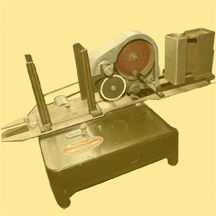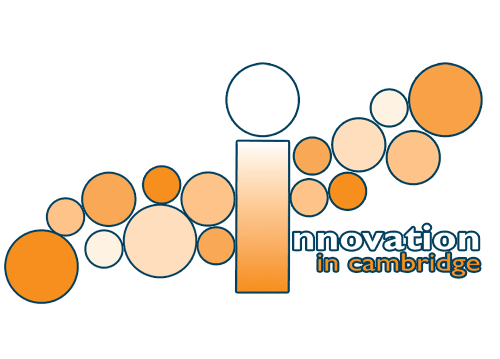
|
 |
Addressing Machine
143 Albany Street |
Sterling Elliot was an inventor all his life. Both his resume and legacy are prolific, but are filled more with practicality than superstar innovations. Despite being lesser known than some of his innovative Cambridge peers, Sterling Elliot’s ideas made a clear impact during his lifetime and ever since.
Born and raised in Michigan, Elliot grew up living a farmer’s life. He wanted a change, however, and as a young man packed his belongings and walked to the nearest city, Grand Rapids. He worked on the railroads, gained a knowledge of mechanics, was granted his first patent at age 22, and in 1882 decided to move to Boston and open his own machine shop.
Elliot’s shop was in Watertown and he was successful enough to also spend time on his greatest passion: bicycles. Next to his machine shop he maintained a bicycle factory, and from 1885 to 1896 Elliot focused on all things cycling. Some of his earliest patents were for a tricycle, a new type of brake for his velocipede, and different wheel tires and rims. He was even able to connect his cycling expertise to horse-racing and invent a new type of low-wheeled sulky that allowed trotting horses to race faster than ever before. Elliot rose to become the President of the League of American Wheelmen and Chairman of the committee that controlled Bicycle Racing. In his spare time, he began publishing "The Bicycling World,” which at its peak had a weekly readership of 112,000. It was this passion for cycling and his magazine publishing which allowed Sterling Elliot to develop the invention that he is perhaps most famous for: the Elliot Addressing Machine.
In 1886, Elliott sold his bicycle factory to the Stanley Brothers, themselves mechanical wizards who invented the first steam-powered automobile, but he maintained “The Bicycling World.” With so many readers, Elliot recognized the need for a more efficient means of addressing labels for mailing. He went to New York City to buy the top of the line addressing machine on the market, and after shopping, realized that he could make a better one himself. He began experimenting in 1898 and ultimately devised a machine which cut addresses onto fiber cards using a standard typewriter or a stenciling machine and then printed the labels by forcing ink through the stencil cards.
Elliot first began to market his machine in 1900, and his innovation paid off. Elliot’s addressing machine was superior to the competition, advertisements argued, in 17 ways, most notably in a more efficient overall performance and Elliot’s stencils were more durable than any other on the market. In 1909 Sterling hired his only son, Harmon, to become his partner in the Elliot Addressing Machine Company, and two years later they moved their factory to 143 Albany Street in Cambridge. Together, father and son improved upon the addressing machine for more than a decade, continued to invent new products with a variety of uses, and held nearly 200 patents. Even the United States government turned to Cambridge when in need of addressing solutions on a massive scale.
Harmon went on to run the Elliot Addressing Machine Company after his father’s death in 1922 and continued to improve and speed up the addressing business. When he retired in 1959, he sold the company to Bessemer Securities of New York. He negotiated the sale to maintain the factory in Cambridge and retain current employees, while Bessemer went on to invest millions of dollars in modernizations to the factory. The factory, however, was never again to be an productive as it was for the Elliots and Bessemer Securites sold the Elliot Addressing Machine Company to Dymo Industries which included a relocation to Randolph, Massachusetts and a name change to Elliot Business Machines. By 1973 the name Elliot was entirely erased and replaced with Dymo Business Systems. The business was to change hands several more times in its final decade, but ultimately the factory was closed in 1987.
Sterling, and later Harmon, Elliot was a prolific inventor who revolutionized a number of lesser-known industries. He held patents for tricycles, brakes, bicycle holders, sewing machines, tires, ball bearings, steam boilers, stencil cutting machines, and glue just to name a few. While his machines have since become obsolete, during their time they were the height of invention and innovation. Elliot’s creations even led to the earliest forms of some of today’s modern conveniences. For example, the first charge accounts used Elliot’s addressing system to mark the cards which registered a customer’s account. Ahead of his time and a brilliant problem-solver, Sterling Elliot is one of the innovative giants of Cambridge’s industrious past.
Sources:
The American Digest of Business Machines, 1924
Elliott, Harmon. "The Story of a Father and Son or Unscrewing the Inscrutable", The Elliott Addressing Machine Co. Massachusetts, 1941
http://www.officemuseum.com/mail_machines.htm
|



